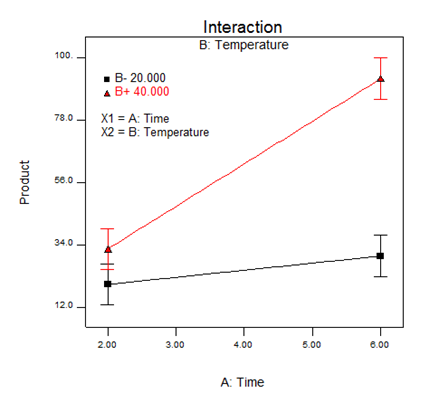Main Effects and Interactions
A main effect is a measure of the average change in the response when the control factor is changed from the low settings (-1) to the high settings (+1) defined by the range studied (Figure 1).

Interactions occur where the impact of a parameter is dependent on the setting of a second parameter. DoE experiments can identify interactions as many parameters are changed simultaneously in the design. A commonly seen example of an interaction is time vs. temperature (Figure 2).

By using experimental design, a mathematical model of the chemical process is generated. The analysis of experimental design studies uses multiple linear regression to fit a polynomial model to the experimental data. Each response is modelled using the important factors and the outcome of a process can then be predicted for a given set of parameters.
For a response y, the mathematical equation can be denoted as followed:
Where
- Route Selection
- GMP
- Introduction to Process Engineering
- Route Selection and Scale Up: Case Study and Exercise
- Process Safety
- Reactive Hazards in Scaling Up: Case Study and Exercise
- Design of Experiments
- Some Definitions
- The Experimental Design Process
- Comparing Traditional Approaches to Experimental Design
- Examples of Variables and Responses for a Chemical Process
- Main Effects and Interactions
- Experimental Designs: Factorial Designs
- Experimental Designs: Response Surface Design
- Design of Experiments: Summary and Further Reading
- Reaction Work-up and Product Isolation
- Environmental Legislation
- Abatement and Waste Treatment